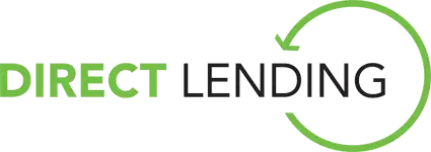

Direct Lending now offers the NEW “HomeSafe Second Mortgage” which serves as an attractive alternative to HELOCs and home equity loans specifically for Homeowners age 55+
For those who qualify, you may now keep your low-interest rate First Mortgage and take out a second-lien Reverse Mortgage for additional funds.
The HomeSafe Second Mortgage complements your existing First Mortgage, unlocking a piece of your stored equity without the burden of a new monthly payment or the need to refinance your First Mortgage, and while the HomeSafe Second Mortgage balance grows over time, it doesn’t need to be repaid until you leave your home.
Due to home price appreciation, many Colorado homeowners have seen significant increases in their housing wealth in recent years, and while this is driving interest in HELOCs and other home equity products, many are unable to benefit from home equity increases for a variety of reasons.
- Selling the home and downsizing may not be feasible due to increased costs to purchase or rent.
- Refinancing and traditional home equity loans are less attractive options given the current higher interest rates.
- Moreover, qualifying for home equity products can be difficult for older homeowners, with many senior refinancing applications denied due to income-based criteria.
The HomeSafe Second was intentionally developed to address these barriers and serve homeowners 55 and older in today’s climate.
To illustrate the benefits of a HomeSafe Second Mortgage, take Samantha’s hypothetical situation. A few years back, she took advantage of historically low-interest rates and refinanced her mortgage. Her finances were in order to retire at 67, but recent inflation is now cutting into her monthly budget. By accessing home equity with a HomeSafe Second Mortgage, Samantha gets the cash she needs to find relief from inflation without needing to refinance her low-interest rate First Mortgage or add the burden of a new monthly mortgage payment.
How is a HomeSafe Second Mortgage different from a traditional home equity line of credit (HELOC)?
The HomeSafe Second Mortgage offers greater repayment flexibility to borrowers – no monthly Second Mortgage payments are required. This allows you to keep more cash in your pocket to use as you see fit.
While monthly Second Mortgage payments are not required, you must continue to pay your existing first mortgage payment, property taxes, homeowners’ insurance, flood insurance (when applicable), and HOA dues (when applicable), as well as maintain the home.
How and when does a HomeSafe Second loan need to be repaid?
As long as the terms of the HomeSafe Second loan and any first lien loan are met, the HomeSafe Second Mortgage does not have to be repaid until the home is no longer the primary residence of at least one borrower or the home is sold.
Usually, the last surviving borrower or their estate sells the home to repay the loan(s). Existing liens may also be repaid from other assets, proceeds from a life insurance policy, or a loan refinance subject to any first lien loan-related restrictions.
What if I owe more on my HomeSafe Second loan than my home is worth?
Reverse mortgages like the HomeSafe Second have a non-recourse feature, which means that the total amount owed on the reverse mortgage balance can never exceed the appraised value of your home. In a reverse loan like the HomeSafe Second, a lender’s recourse is limited to the mortgaged property. Neither you nor your heirs will be personally liable for the reverse loan.
What if I no longer live in the home as my primary residence?
If you permanently leave the home, the HomeSafe Second loan will need to be repaid. You will receive a Repayment Notice that states the mortgage is due and payable.
What are the costs associated with HomeSafe Second?
In addition to interest, HomeSafe Second costs can include a property appraisal fee, origination fee, closing costs, servicing fee, and a modest charge for independent counseling. While closing costs vary based on the type and size of the loan, they’re similar to those for any traditional mortgage.
You can roll most of these upfront costs into the HomeSafe Second loan, so your out-of-pocket expense is minimal. You can further reduce your loan costs by taking a lower amount of proceeds than are available to you.
Please contact us for a detailed cost breakdown and explanation of the different interest rates and pricing options available.
What are my responsibilities once I get my HomeSafe Second loan?
As a HomeSafe Second borrower, you can enjoy all the advantages a reverse mortgage can bring to your life, including making no monthly mortgage payments on HomeSafe Second Mortgage.
You must continue to live in the home as your primary residence, pay your homeowner’s insurance, real estate taxes, and any applicable HOA or condominium assessments and fees, keep your first mortgage current when permitted by law, maintain your home, and comply with the obligations in the security instruments.
A HomeSafe Second loan does not change any of the requirements associated with your first lien mortgage, including the requirement that you make timely payments to your first lien servicer.
Will I still own my home?
Yes. A HomeSafe Second mortgage treats ownership just like any other mortgage, meaning that there is a lien on your house that has to be paid back at some time. You still own your home subject to the lien(s) and your name remains on the title.
Can I lose my home?
So long as you maintain your responsibilities, the HomeSafe Second lender will not be able to foreclose on your home, even if the unpaid balance exceeds the value of your home. These responsibilities include living in the home as your primary residence, paying your property taxes, homeowner’s insurance, flood insurance (when applicable), and HOA dues, as well as maintaining your home and meeting all of the first-lien mortgage obligations (when permitted by state law).
If you do not meet these obligations, the loan servicer will attempt to contact you to resolve the situation. We highly recommend you keep an open line of communication with the servicer when any issues arise.
Home foreclosure is a lender’s last resort when the loan is due and payable and cannot otherwise be repaid.
Will I be able to leave anything to my family?
Home equity is the value of your home, if any, that remains once a HomeSafe Second loan, first lien mortgage loan, and any other liens are paid. Such home equity, if any, belongs to you and your estate. This can be the case based on several factors, such as how much you choose to borrow, the interest rate of your loan, and/or if your home increases in value during the life of the loan.
It’s important to remember that the non-recourse feature of a reverse mortgage loan, such as the HomeSafe Second, assures that neither you nor your estate will be personally liable for the HomeSafe Second loan. The lender’s recourse in a HomeSafe second loan is limited to the mortgaged property. In the event the debt exceeds the value of the home, you/your heirs simply walk away. Note that this is a worst-case scenario and relates to the second lien mortgage only. Your first lien mortgage may be a recourse loan.
Call Me For More Information!
Jay Fertman
720-870-6812
(Landline. Does not receive text messages)
*The HomeSafe Second reverse mortgage borrower must meet all loan obligations, including living in the property as the principal residence and paying property charges, including property taxes, fees, and hazard insurance. The borrower must maintain the home. If the borrower does not meet these loan obligations, then the loan will need to be repaid.
This information was not provided by HUD or FHA. It has not been approved by FHA or any Government Agency.
If you are thinking about debt consolidation, you might want to first consult a non-profit credit counselor.
The HomeSafe® reverse mortgage is a proprietary product of Finance of America Reverse LLC and is not affiliated with the Home Equity Conversion Mortgage (HECM) program.
